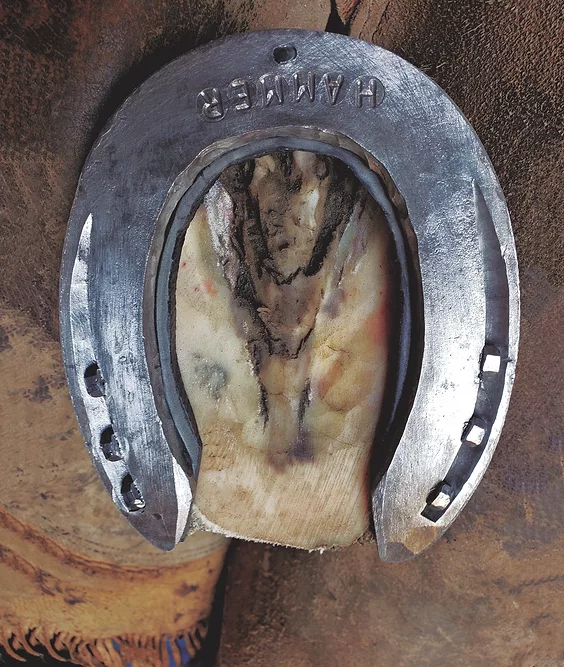Morrisville, N.Y., farrier Doug Corey uses an assortment of bar shoes, but none of them is store-bought. He welds them all in his trailer.
“It’s easier to shape an open-heeled shoe to a foot,” he told attendees during a How-To Hoof-Care Product Knowledge Clinic, sponsored by Mustad Hoofcare, at the 2022 International Hoof-Care Summit in Cincinnati, Ohio. “I can do what I need to get a superior fit. Then I can decide what kind of bar I want, whether it’s a big wide bar or one that is narrower.”
Corey prefers a wide bar to one that is narrow to help the horse in the arena.
“I don’t like a bar that is the same size as the branches,” he says. “The goal is flotation. When the horse goes into a sand arena, I want heel flotation. A wider bar helps keep the heels elevated in the sand.”
While a straight bar is the most common that he applies when one is necessary, he rarely uses an egg bar. Yet, he’s grown accustomed to using an open-toe or reverse shoe.
“Some horses don’t like to have stress on their dorsal hoof wall,” Corey says. “This was an old rope horse with a long history of laminitis (top photo). The only way I could keep it sound well into its teenage years was to put a reverse shoe on.”
Although the open-toe shoe is often called a reverse shoe, turning around a typical keg shoe is not his first option.
“I try to turn my open-toed shoes and plain stamp them,” Corey says. “I try to keep the bar wide. This lets me build a wedge into my reverse shoes. This one has a rim pad. I used a grinder on the heels and if you narrow the branches, it helps get a little more penetration at the toe.”
Learn More
- Therapeutic Horseshoeing Modifications that Work: Many farriers diversify their hoof-care practices across multiple disciplines. The disparity often leads to a variety of shoeing modifications that are incorporated into one’s everyday work, and Doug Corey is no exception.








